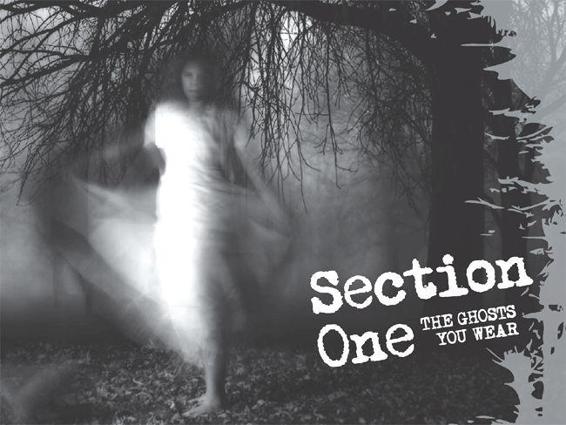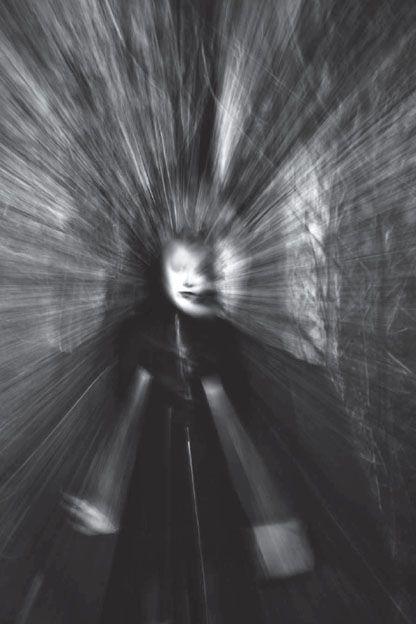Haunted Objects: Stories of Ghosts on Your Shelf (2 page)
Read Haunted Objects: Stories of Ghosts on Your Shelf Online
Authors: Christopher Balzano,Tim Weisberg

Intelligent spirits suffer from a bit of superstition, which may help to define why an item can be haunted. Many people believe ghosts can’t pass on to the next world until all of their business is in order or they have resolved anything holding them back. Some may not even know they are dead. In these cases, they may use something familiar to hold, to communicate with, and will not rest until cherished items are in the hands of the people who deserve them. These may be objects that best defined the spirits in life, so it only makes sense the spirits can manipulate them in death. For example, a doll played with by a young girl who died is played with by an unseen force after her untimely death; a photograph of a mother is used to inform everyone she is okay; and an heirloom watch disappears when a son decides to sell it.
The trick is determining whether the item is haunted or just part of a haunting. We decided to chronicle both here, but only in those cases where a particular item stands out or seems to be the center of the activity. For example, there are few places with a richer documentation of paranormal activity than the Lizzie Borden Bed and Breakfast in Fall River, Massachusetts. We could have talked about the candlesticks that have flown off a shelf and hit people or written about the clock in the main room that runs slow or stops completely when other paranormal activity is going on. Instead, we chose the story of a misplaced book trying to communicate with a renegade psychic.
We should be straightforward about some of the choices we made in this book. The paranormal can be about evidence. In fact, seeing or hearing a ghost is what makes a haunting real for people and what makes paranormal TV shows so popular. But we have never allowed the lack of evidence to get in the way of telling a good story.

Many people believe ghosts can’t rest until cherished items get into the hands of loved ones, which helps to explain why heirlooms, such as watches, can be associated with paranormal activity.
We consider all the people who shared tales for this book to be reliable, and whenever possible, we try to back up their claims with evidence (the kind you find in a hall of records or a library). The stories they told are true to them and thus, that makes them true stories. You can’t dismiss their feelings because you can’t duplicate their experience.
Some people asked that we not use their real names or only use their first names, and we accommodate them. We present them to you, with our framing, of course, and allow you to make a decision on their truthfulness, if you choose.

Glasses, plates, and other pieces of china may look pretty harmless, and in most cases are, but sometimes these items can become a focal point of a spirit … even a butter dish. Yes, really. See the story on P. 136.
This book contains true stories of haunted items and classic stories of possessed possessions, with an occasional urban legend and folktale thrown in. Don’t worry, we’ll tell you which is which, but sometimes that’s not really important. A bit of truth lies in each folktale. Think of these stories as personal experiences mixed with superstition, the majority of which are told by everyday people who discovered something in their lives that was not what it should be. Most of the haunted objects are common, household items that, for one reason or another, became the focal point of a spirit. In almost every case, each object found its way into the hands of the people who reported the haunting. You’re left wondering: Did the object choose the person, or did the person help the ghost make itself known?
That, of course, leads to the next question, one that might be harder to ask but will pass through your mind at least once as you read this book: Is there something on my shelf making those spooky noises I hear when I try to sleep? The answer is probably no.
The good thing about a book like this is that you can close it when the story is over and go back to the part of your life that believes ghosts aren’t real. But then again, the people in these stories thought the same thing.
For now, turn to the first story, avoid dolls of any size or age, stay away from yard sales, and put anything you inherit in a safety deposit box.
— Christopher Balzano

Stone’s Dress
O
ne of the more intriguing aspects of any ghost sighting is what the apparition is wearing. Often the clothing helps us place the spirit, whether it is tracing it back to a certain person or to a specific time period. But what happens when the ghost leaves its clothes behind?
There is a long and haunted history at Stone’s Public House in Ashland, Massachusetts. Captain John Stone built the structure in 1834, when he heard the railroad was going to run through his property. He operated it as a tavern and hotel for two years before leasing it to a succession of innkeepers. Over the ensuing 140 or so years, it fell into disrepair until Leonard “Cappy” Fournier purchased it in 1976. Once he began making renovations, the paranormal activity that had long been whispered about at Stone’s increased tenfold.
The inn, known as the Railroad House during Stone’s time, is believed to have been a stop on the Underground Railroad. It may also have a more sordid history. There have allegedly been at least seven deaths in the building. The footsteps of some of the victims are often heard echoing throughout the halls, and their spirits are known to move furniture. The first death involved Captain Stone himself, who murdered a man during a poker game and ordered him buried in the basement of the building.
One of the spirits associated with the location is that of a young girl, who can be seen staring out a second-floor window—a window to a storage room no living child is allowed to enter. Some believe she is the spirit of Mary J. Smith, killed on the train tracks outside Stone’s in 1862 when she was just 10 years old. Although she was immediately brought into the Public House to receive medical treatment, she died shortly thereafter.

Part of the dress found in the Stone attic.
Even today, the staff reports hearing sounds of a young girl giggling or crying when there is not one present. There are also reports of the sound of a ball bouncing. But why would young Mary’s ghost want to stay in the place where she met her grisly, untimely demise?
Her spirit is believed to be attached to the bloody dress she wore that fateful day, and it is allegedly that dress that resides in the attic of Stone’s Public House. How it got there nobody knows, but no one wants to remove it—and for good reason.
The dress is ripped and tattered and stained with dark blotches that nearly everyone agrees appears to be blood. Over the years, it has become infamous among those wishing to check out the ghostly goings-on at Stone’s Public House, but generally nobody—including the staff—is allowed into the attic.
That didn’t stop one former waitress from sneaking up there and taking the dress out. She took it home with her and was plagued by paranormal activity. She gave it to her boyfriend, who also had bad experiences while the dress was in his possession, even though it was locked in the trunk of his car. Finally, the waitress confessed to removing the dress from the building and returned it to the attic. Neither she nor her boyfriend had any more paranormal issues after that.

Another piece of the mysterious dress.
More recently, paranormal investigator Brian Harnois took the dress home while investigating Stone’s for an episode of the Syfy Channel television show,
Ghost Hunters
, and also reported strange activity.
Independent paranormal researcher David Francis, who has worked closely with members of the Ashland Historical Society, first read an article about the bloody dress on the Internet years ago written by David Retalic, whom he said knows more about the ghosts at Stone’s than anyone else. Intrigued by a haunted location so close to his own home, Francis began investigating Stone’s and researching the history behind the haunting. The more he dug into it, the more he started to question whether the dress actually belonged to young Mary.
“I would have accepted this stance on the dress as fact, but as I began to explore the history of the Public House and its many legends, I started having my doubts,” Francis said.
In April 2008, Francis and Retalic visited the attic. The dress was no longer hung neatly as in past years; instead, it was in pieces that had been strewn about.

